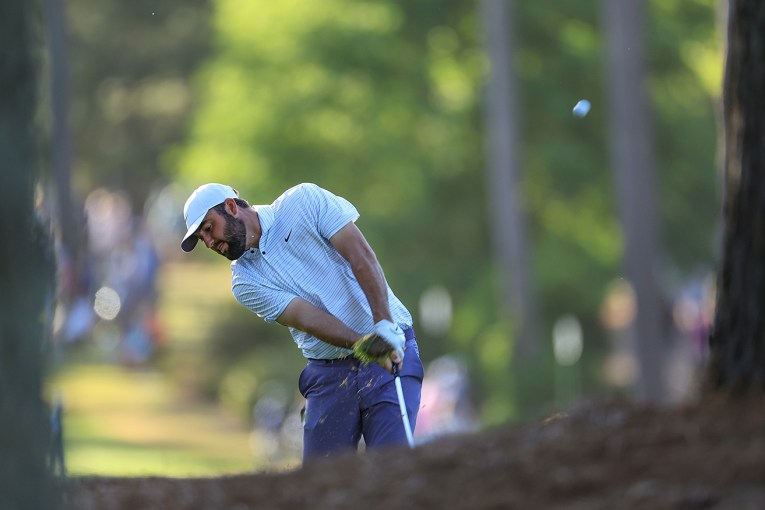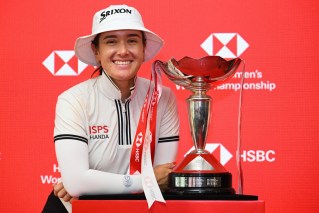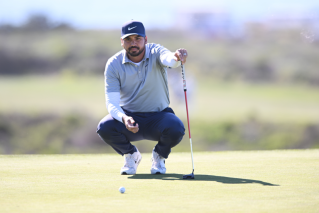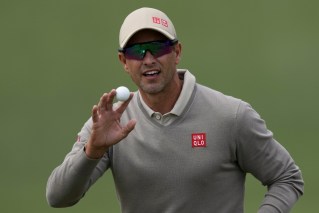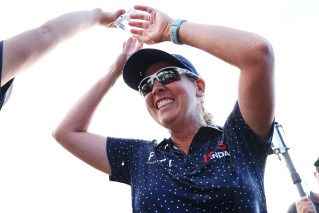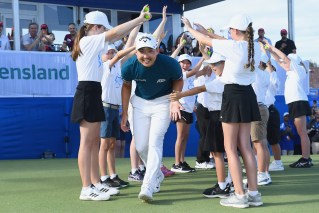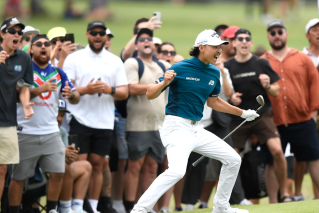How one trap shot saved the Masters from mediocrity
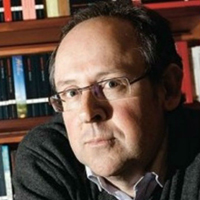
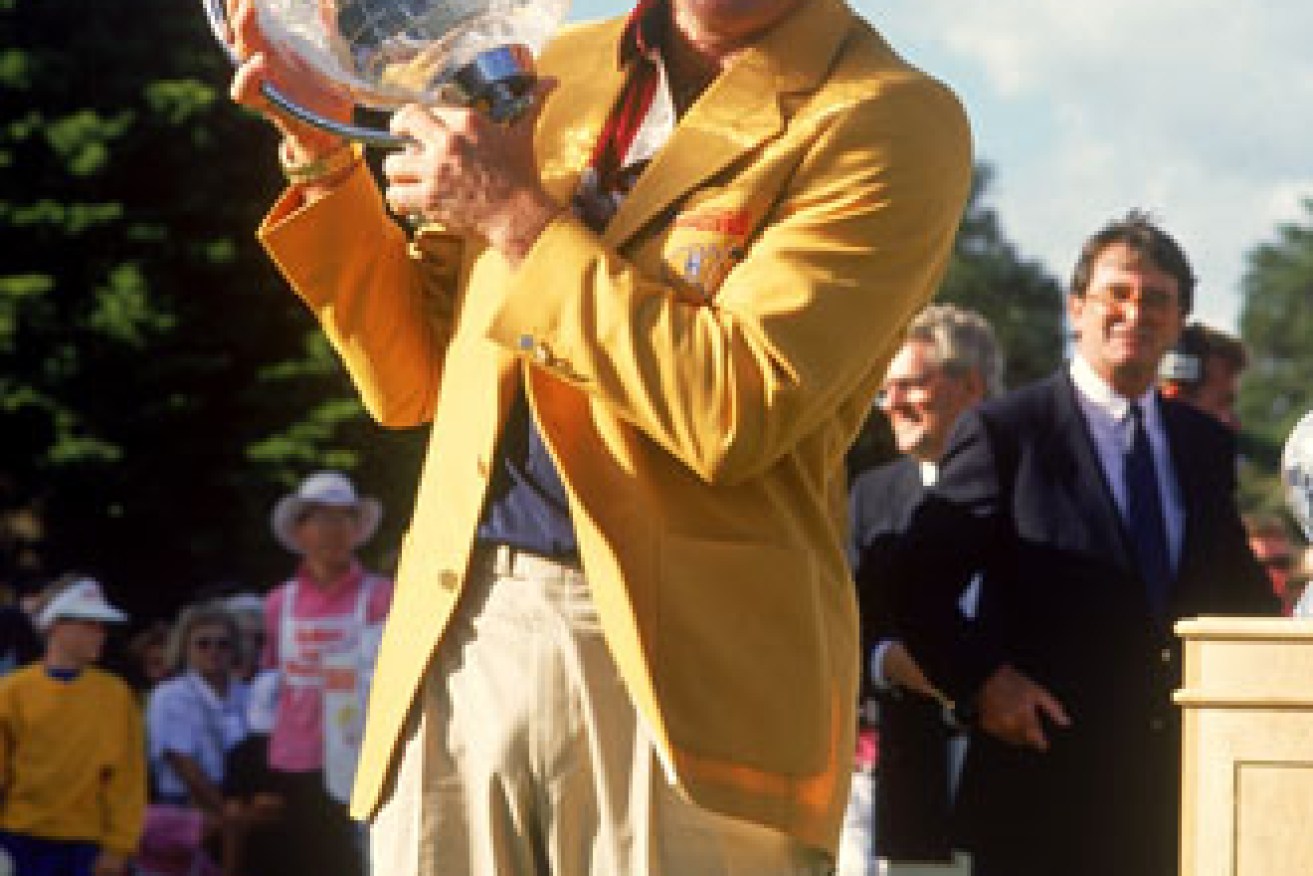
Back in the day: Greg Norman after winning the 1991 Masters. Photo: Getty
Nick Cullen gave the Australian Masters a moment to remember when he clinched the tournament – and time-honoured gold jacket – with a 25-metre trap shot from beside the 18th green that finished a metre from the pin.
That tap-in par gave the South Australian leftie the biggest prize of his short career: $180,000 and, almost as importantly, the knowledge that, under the fiercest of final-round pressure, his game would hold up.
• Look out Golden Bear, Tiger’s got a new coach
• Woods lashes writer over satirical interview
In producing that extraordinary shot, Cullen, 30, pipped defending champion, tournament poster boy and crowd favourite Adam Scott by a stroke, and gave the event the thrilling finale it was crying out for.

Cullen acknowledges the applause after his bunker shot on the 18th. Photo: Getty
Scott, who started the day five shots in arrears, slowly worked his way back into the championship over Metropolitan’s closing holes, making three birdies. His long-range putt for birdie at the last – from at least 20 metres – clipped the edge of the hole but somehow stayed out.
It was a brilliant performance by the world No. 2, who defied a sometimes-wonky short game, and perhaps lack of motivation among such a modest field, to nearly pinch a tournament he never looked like winning until about 5pm on Sunday.
The Queenslander was trying for a third successive Masters title but was forced to settle for a three-way share of second place – with Newcastle’s James Nitties and Victorian Josh Younger – despite shooting a four-under-par 68 final round.
So the final-day crowd, and tournament organisers, would have gone home happy. The weather was good, the course immaculate, Scott gave it a good shake, and the event was won courtesy of a memorable shot in front of the 18th hole grandstands.
Yet the tournament needed a thrilling finish like that, or it risked drowning in mediocrity.

Missed by that much: Scott made a charge, but it was too late. Photo: Getty
After Scott, the drawcards, and we use that term loosely, were Geoff Ogilvy (No. 86 in the world), Steven Bowditch (91), Stuart Appleby (123), and American Boo Weekley (124).
Another American Kyle Stanley, ranked 312, was slightly nonplussed to be dragged, blinking in the TV arc lights, into the media centre on Wednesday. He wondered – as did some of the rest of us – what he’d done to deserve that sort of recognition.
So the event was sorely lacking in star power. Its success hinged purely on Scott’s ability to stay on the leaderboard.
And things looked particularly bleak mid-morning on Thursday when the Queenslander played his first nine holes in three over par. The prospect of a missed cut had tournament organisers reaching for the Bex and a comfy spot in the clubhouse for a good lie down.
This is the way of the Australasian Tour in 2014: it struggles for sponsorship, and therefore prizemoney, and therefore big-name fields.
This year’s BetEasy Masters was preceded last year by the Talisker Masters and before that, in 2011, the JB Were Masters, and so on. Sponsors come and go like leaves in a strong northerly.

The great Kyle Stanley, the world’s 312nd ranked player. Photo: Getty
Organisers were able to lure American Weekley here this year, but only because he is a close mate of Bowditch and was happy to come down for little more than an airfare and some spending money.
Once upon a time, and forgive me if you’ve heard this melancholy tune before, the Australasian Tour was considered an attractive late-season destination for American and European players who wanted to experience some sunshine, good courses and strong competition before Christmas.
Nicklaus, Palmer and Player were regular visitors. And the Masters’ honour roll includes some of the modern game’s finest: Greg Norman, Tiger Woods, Bernhard Langer, Justin Rose, Ian Baker-Finch, Colin Montgomerie, Mark O’Meara and Ian Poulter among them.
But the tournament’s golden lustre has become somewhat tarnished in recent years.
When the Masters began 25 years ago, it was a championship unashamedly modelled on the US version played at Augusta National. It was to be played at the same venue each year – Huntingdale – and have a jacket presented to the winner; gold in this case, as opposed to green.

Back in the day: Greg Norman after winning the 1991 Masters. Photo: Getty
It quickly struck a chord with the Melbourne sporting public.
Even though the tournament was barely 10 years old, its shameless marketing slogan through the 1980s was: The Tradition Continues.
Around that time, Norman regularly filmed commercials promoting the tournament. One year, he emerged from the murky Huntingdale lake wearing scuba gear and carrying a five iron to say: “Be there when the tradition continues.”
In that inaugural year, 1979, Bob Shearer had taken the clubhouse lead on the Sunday, playing several groups ahead of unheralded New Zealander Barry Vivian.
Shearer headed to the bar and threw back a beer or two (some said three or four, but that can be dismissed as unverified speculation) to celebrate his likely second placing and, of course, to catch up with fellow rogues Ian Stanley, Jack Newton and the like.
Then the Melburnian watched the Channel 7 telecast with growing alarm as Vivian dropped shots all over the place on the back nine, and a playoff suddenly became a possibility.
The perverse among us were silently hoping Vivian took a bogey up the last hole, instead of par, which would have put him in a sudden death playoff with Melbourne’s favourite golfing son, who at that stage might have struggled to make it down the clubhouse steps let alone hit a small white ball sitting atop a tee.
Now, that would have been worth watching …
Still, Lee Trevino played that year, as did Norman, and all the best-credentialled Australians. There was no encroachment from the European or US Tours on to dates that were traditionally set aside for the Australasian Tour.
And so a star event was born. Every year, the tournament was held in the same week at the same venue, and the galleries flocked to line the Huntingdale fairways.
Not so any more. And the fact the event is now moved around Melbourne’s sandbelt courses on rotation has robbed it of that one unique and attractive feature.
Still, none of that will matter a jot to Cullen, who was the Indonesian Open champion in 2012. He was a worthy winner and deserves all the plaudits and prizemoney that come his way.
And, of course, the gold jacket – the fashion accessory that remains an integral part of the Masters, even if so much else about this championship has changed.
